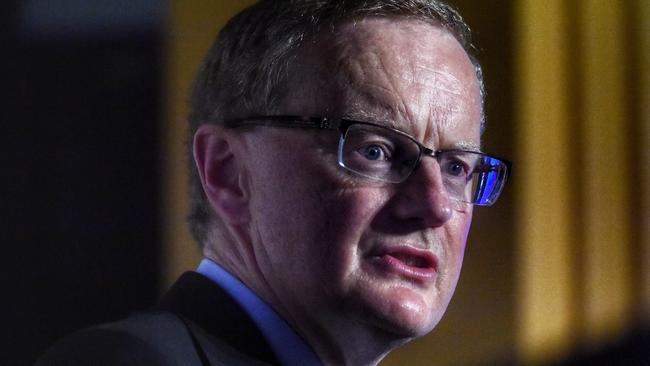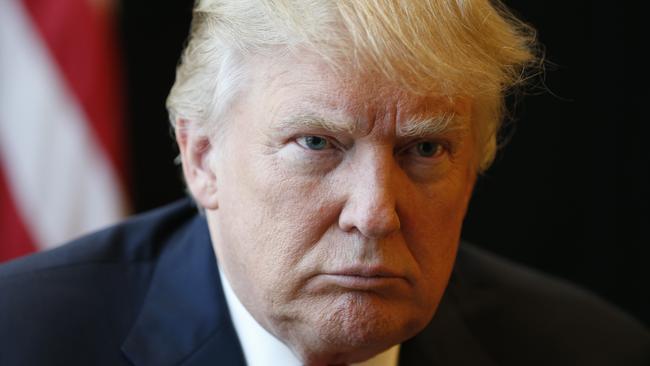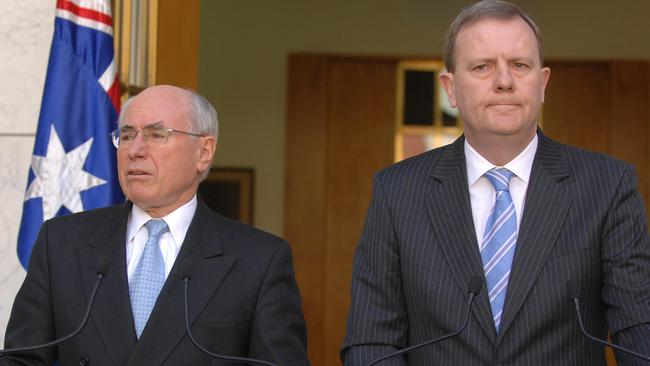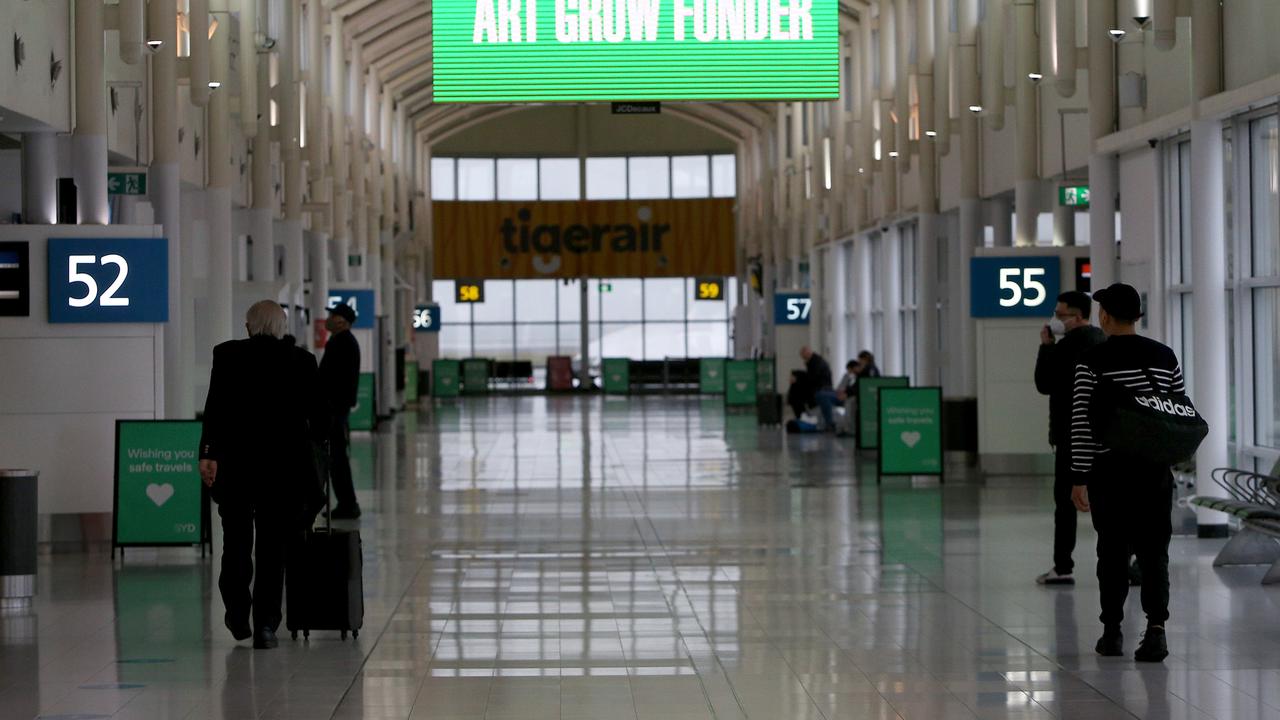RBA heading towards new ‘no-cut’ February
AT the start of February then-RBA governor Glenn Stevens kicked off the final year of his tumultuous 10 years at the top of Martin Place by leaving the official interest rate unchanged, writes Terry McCrann.

Business
Don't miss out on the headlines from Business. Followed categories will be added to My News.
BACK at the start of February then-Reserve Bank governor Glenn Stevens kicked off the final year of his tumultuous — up and down, and then down again and again, up and down — 10 years at the top of Martin Place in Sydney by leaving the official interest rate unchanged at 2 per cent.
This coming February, at the first RBA meeting for 2017, his successor Philip Lowe will also start the year by leaving the official rate unchanged, but this time at 1.5 per cent.
He will be hoping the year doesn’t see a repeat, with subsequent cuts. And every one of you should as well. The RBA does not want to cut again — yesterday’s minutes of the last meeting for the year which left the rate unchanged made that crystal clear.
If it does have to cut again, that would be telling us that bad things were happening to our domestic economy or that the global economy — either the US or China or both — had gone seriously and unexpectedly (especially the US) off the rails.
And by that I do not mean a mere successive negative GDP figure for the December quarter — which would give us a supposed ‘technical recession’ — as the RBA knows that’s an utterly nonsense construct, but something far worse. In any event we are not going to get that negative figure.
A year ago the RBA was waiting, not quite desperately, for Fed head Janet Yellen to raise the US official rate. She’d indicated there would likely be not one but four rate hikes through 2016. We only got the first a week ago.
Higher rates in the US were critically important for us to take upward pressure off the Aussie dollar. When we didn’t get them, and we did get very low inflation numbers, Stevens was all-but forced to cut twice.

It was also into a context where the US economy — still easily the biggest in the world — was struggling to develop momentum and there was a big question mark over China.
Now, at least for the moment, the pressure on the Aussie and so also the RBA and rates is off. Donald Trump’s win has completely changed the market and (US) economic mood.
We won’t be waiting until the end of 2017 for the Fed’s next rate hike. The question is how many we get and how quickly. And whether the Fed will end up chasing accelerating US inflation.
This gives the RBA great flexibility as to what it does to its official rate and when. We are not quite back to ‘monetary policy as normal’; not when we are talking about a world moving away from official rates at zero.
We dodged one bullet on Monday with the midyear budget update keeping our triple-A rating. But higher US policy and long bond rates are going to drive up the cost of the 40 per cent or so of their money that our banks raise on global markets; and in turn that will feed into mortgage rates.
That won’t cause the RBA to cut to offset it; but it would work to postpone any rush to start hiking.
We have a pretty clear path through to the February meeting. After that it will undoubtedly get ‘interesting’.
As for Stevens, he was back at RBA ground zero yesterday for the unveiling of his portrait. I’m told it well captured both the outer and — contemplative — inner man.

HOWARD’S 99-YEAR SHEMOZZLE
JOHN Howard and Peter Costello did some wonderful things in government — most notably of course, building up the budget surpluses for their respective successors, Kevin Rudd and Wayne Swan to fiscally micturate away.
Thank goodness, they managed to at least keep the money in the Future Fund out of their hands. That’s $125 billion that the taxpayers got to offset some of the $500 billion, and counting, Rudd-Swan debt.
But the Howard Government’s bargain basement sale of Sydney Airport in 2002 was an A1 — indeed, a triple-A — stuff-up of truly historic proportions. Now, their (political) heirs and successors in the Turnbull Coalition government are having to deal with it.
The sale didn’t only give the new private sector owners of Sydney Airport a 99-year lock on the nation’s number one gateway at Mascot; it also gave them first dibs on having a similar lock on any second Sydney airport.
So on Tuesday, the government set the clock ticking. The Sydney Airport Corporation has four months to decide whether it will take up the option to spend $5 billion-$6 billion building the new airport at Badgerys Creek.
It should be a no-brainer — SAC; and an out-and-out no-win for Australia.
SAC would not only maintain its monopoly on Sydney as a gateway. It would also pick up all the Commonwealth approvals to get it built. Along with the benefit of the $3.6 billion the Commonwealth and state are spending on Western Sydney road infrastructure.
But, it would have to build it exactly to the specs set by the government: a 3700m runway, a 10 million-a-year passenger terminal, and do it by 2026.
If it doesn’t want to, the government can do it or offer it to a third party.
Either way that would pose a huge risk to SAC: particularly as once built to these specs, there’d be nothing to stop the other owner doing what it wanted at Badgerys. Like, putting down a second runway, and giving Sydney and Australia real airport competition.
SAC would also be giving up the ability to play the two airports to maximum advantage — to its maximum advantage, not that of the passengers, the taxpayer or the country.
Bluntly, there should never be another privatisation as incompetent and as onerous on all Australians as this one. Quite apart from letting SAC run a second-class facility: it should have been forced as a condition of the 2002 sale to fix up the two-terminal shemozzle.
Don’t blame the current government; it’s doing its best with tied hands.
Originally published as RBA heading towards new ‘no-cut’ February


